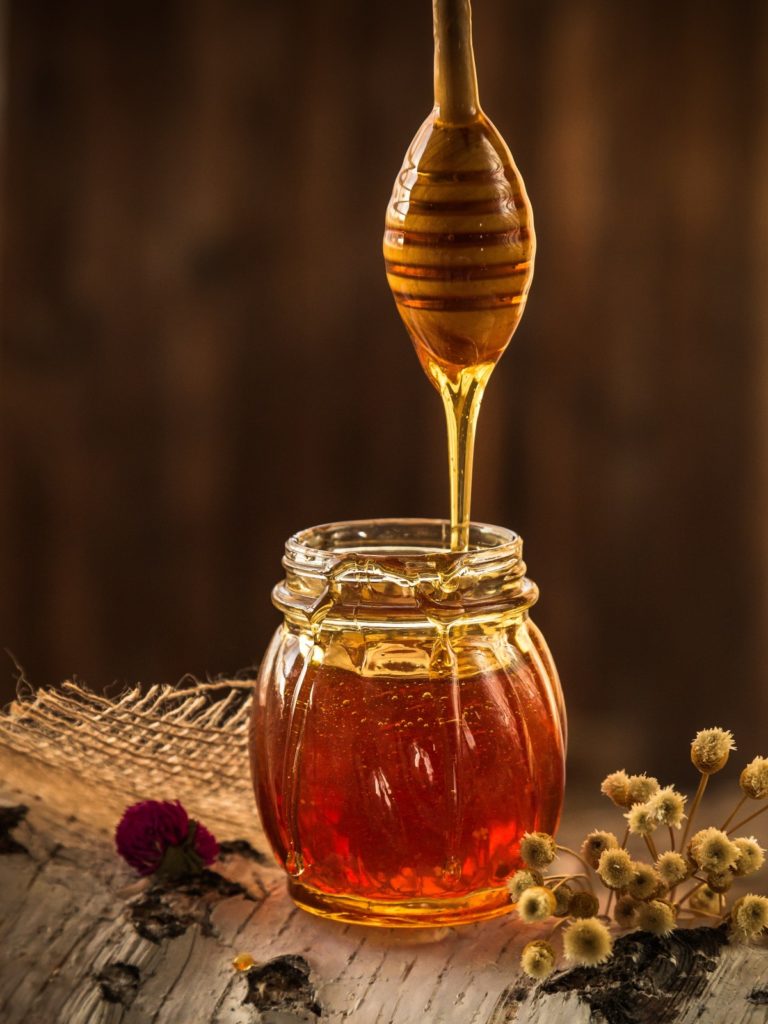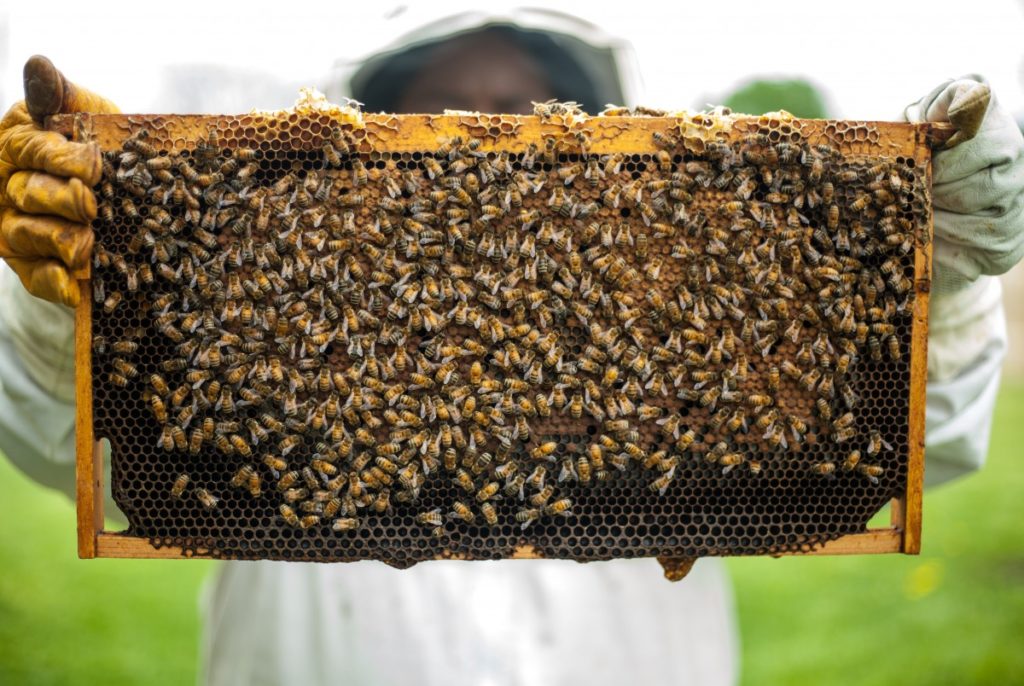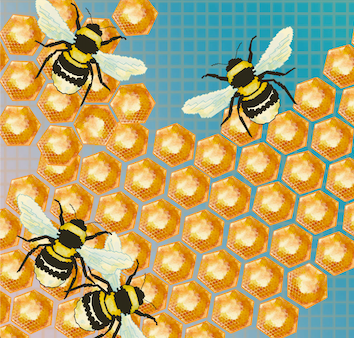Visualising Peace with Honey

In 2014, ISIS captured the Iraqi city of Mosul.[i] Terrible acts of violence and oppression followed, with women and minority groups particularly targeted. Many different cultural sites were also destroyed, from mosques to churches to libraries and museums. Then came the ‘Battle of Mosul’ (sometimes called the ‘liberation of Mosul’), a lengthy military operation launched by Iraqi government forces to drive out ISIS and retake the city. It lasted from October 2016 to June 2017, and – as Mosuli historian Omar Mohammed testified in the blog he wrote at the time, under the pseudonym Mosul Eye – it was as bloody and destructive as the occupation itself. Historian Dr Emily Mayhew reflects on what happened in Mosul in her book The Four Horsemen and the Hope of a New Age. War, Famine, Pestilence and Death stalk through its pages, always looking for a way to take over, but Mayhew’s focus is on the people who stand in line against these age-old threats: ‘the doctors, scientists, statisticians, engineers, peace negotiators, pharmacists, historians, forensic scientists, vaccinators and volunteers who are creating solutions to life and death problems which threaten us all… the new heroes of our age’.[ii] During her discussion of different aspects of Mosul’s post-conflict recovery and rebuilding she writes this, inspired by a short Mosul Eye blog post on record levels of honey production noted at the end of 2018:
‘In 2018, if War and Famine had tried to sneak back into Mosul down some of its remaining, narrow, shadowed streets, they would have been beaten back by the sight of another very simple foodstuff. In January 2019, a year after liberation, the historian at Mosul did a survey of what was on sale in the town’s restored marketplaces and shops. He found honey, lots of it… The sight of the jars of honey meant many things. It meant that the agricultural ecosystem was being restored, despite the destruction and the oil spills and the toxic remnants of occupation and the blood of liberation. The land was recovering enough to support plants that could support bee colonies, and the natural farming cycle of Nineveh was back in the hands of people who respected it. It meant the sounds of the city had returned to a steady noisy normal, without explosions or heavy vehicles thundering by, so bees flew without fear, and the keepers tended them without fear during the day. The bees will need care. Water supplies are still low and this could affect crop yields. But Mosul bees are tough. Wherever they fled to during the war, they survived somehow and then they came back, unstressed enough to make record amounts of honey, and livings for many. Hope in a jar, in yogurt, in tea, licked from a spoon by a child who had perhaps never known what sweetness really meant before that moment. There are beekeepers in the line, eight hundred of them at least, hive smokers at their feet, just back from market, in Mosul.’
Emily Mayhew, The Four Horseman and and the Hope of a New Age, 2021: pp. 240-241

Our research into different habits of visualising peace has highlighted to me a tension between utopian ideals (which often represent peace as something beautiful, spring-like, naturally occurring and organic) and more realistic visions (which underline the hard grind involved in building or restoring peace, moment by moment, step by step, brick by brick).[iii] What I like about Mayhew’s analysis is her combination of some of the optimistic imagery inherent in utopian ideals – ‘hope in a jar’, the literal and metaphorical sweetness of honey, and the bees’ ability to recover and return after ‘the ISIS winter’ – with an awareness of the fragility of this recovery and the care and endeavour involved in beekeeping. Honey is a naturally occurring substance, but its production is the result of thousands of individual workers (bee and human) and quite staggering levels of collaboration. A honeycomb is an intricate structure, built slowly over time by a collective of workers (full disclosure: by the females!); and as well as tasting sweet, it is rich in antioxidants and other healthy nutrients. The work of the hive seems to me to be a good way of visualising both the rewards and the efforts of peacebuilding.[iv] When I picture those beekeepers of Mosul returning to the city and selling their sweet wares to children who had been through years of terror and famine, I do not simply see nature slowly reasserting itself but the return of human forced migrants and the grassroots rebuilding of social infrastructures that are vital to sustainable recovery.
What do you think?

- Does this analogy work for you?
- Can you see any other connections between beehives, beekeeping, post-conflict recovery and peacebuilding?
- What aspects of peace or peacebuilding does the bee/honey/hive analogy not capture?
- What other foodstuffs are helpful for visualising peace? (In The Four Horsemen, Emily Mayhew also writes about potatoes and wheat…)
If you enjoyed this item in our museum…
You might also like ‘Green Mosul‘, ‘Unlearning War‘, ‘Education: a force for sustainable peace‘ and other items tagged under ‘social repair‘.
Alice König (April 2022)
[i] This excellent podcast series offers eye-witness accounts: https://extremism.gwu.edu/mosul-and-the-islamic-state.
[ii] You can find out more about Mayhew’s book and the ‘new age of humanitarianism’ in this podcast.
[iii] The Everyday Peace Indicators project is a good example of an approach that looks at how peace is experienced on the ground, by different people in different ways, rather than at how outsiders imagine or idealise peace, peace-making and peace-keeping.
[iv] Many elements of this metaphor can be seen in this discussion by Ingeborg Breines of the vision of a ‘culture of peace’ developed by UNESCO in the 1980s: https://www.ipb.org/studies/the-culture-of-peace-a-necessary-utopia/. As Breines analyses, there are valuable elements of idealstic, utopian thinking in this vision, alongside more realistic, pragmatic approaches and a strong awareness of gender inclusivity.